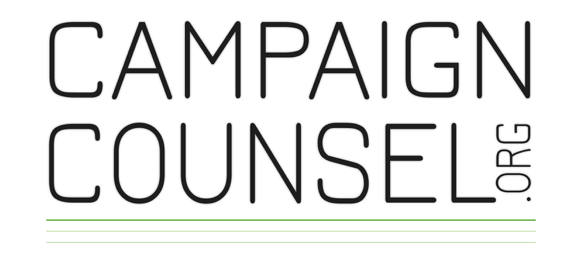Assembling Your Best Capital Campaign Committee
What is the most valuable asset that your nonprofit capital campaign can gather?
Leadership.
A capital campaign is likely to be the biggest fundraising project in which your organization ever engages. There are many indicators to success. For example, the strength of your case for support and the philanthropic capacity of your donor community will help or hinder your campaign.
However, the most valuable asset to your nonprofit capital campaign is leadership. The volunteers you recruit to join your capital campaign committee — people who have financial capacity, connections, and a passion for your organization’s mission and your campaign vision — will make your campaign successful.
1. What are the Functions of a Capital Campaign Committee?
In general, your initial campaign committee begins as a small working group of two to three organizational leaders, including board members and administrators – a cabinet. The cabinet’s first goal is to finalize your case for support, the document that outlines the needs of the organization and of the community and highlights the benefits of your project that address those needs. That needs-and-benefits document will become the basis for your campaign materials including your brochure and video, which the cabinet will help review and finalize. Your case for support also serves as a backbone for future foundation grant applications.
Once your campaign materials are prepared, the cabinet should grow to include additional administrators and board members. Now your campaign committee is ready to begin providing insight on existing donors you hope to solicit for gifts and pledges. From their knowledge of the community, the committee members will be asked to assess:
What is the donor’s connection in the community?
What is their history of philanthropy?
How are they connected to your organization? In other words, why might they be passionate about your project?
Committee members also will be asked to brainstorm ideas for new donor prospects -- philanthropic people, companies and foundations that have the financial capacity to support your campaign. This is an important point; we are only concerned with a prospect’s capacity. Do not presume any prospect’s willingness to make a gift – give everyone the chance to support your project!
With prospects identified, committee members will be assigned to open the doors to and/or solicit those prospects with whom they have personal connections. Strive for peer-to-peer solicitations, which means that the committee member and his or her assigned prospects know one another well and have similar financial capacity. For example, a committee member who made a $5,000 gift to your campaign should not be assigned to a $100,000 prospect they barely know. There are exceptions, like family members, but the goal is to make peer-to-peer solicitations.
2. Who Would Make a Good Capital Campaign Committee Member?
The best capital campaign committee members are, first of all, committed to the success of your campaign. From there it’s important that they have knowledge of the mission of the organization and how that organization serves the community
So, who makes a great campaign committee member?
People who are recognized within the community. They will add credibility to the campaign.
People who are well-connected within the community. They will add more connections to the campaign and open more doors.
People who are philanthropic. They will help move the campaign forward financially.
People who are hard workers. They may not have a lot to give, but as long as they give to the best of their ability, their hard work will be valuable.
3. How and When Do We Recruit Members onto the Capital Campaign Committee?
As mentioned previously, your initial capital campaign committee is a cabinet of two to three board members and administrators that is formed at the beginning of your campaign. Not only do they help prepare campaign materials, but they also are the first to financially support the campaign. In essence, your cabinet is the epicenter of your fundraising efforts. The cabinet is asked to give, is trained on how to make professional solicitations, and is tasked with soliciting your organization’s family, which includes all board members, staff and volunteers. Capital campaign always start with the family. After all, why would anyone else in your donor community give if your nonprofit family hasn’t stepped forward first?
Family solicitation is the first step towards growing your cabinet into a fully functioning campaign committee. Board members, staff and volunteers who give personally significant gifts and have connections within your donor community should be asked to join the committee, but only after they have made their pledge. The reason you should wait to invite a family member – or anyone – on to your campaign committee is based on commitment. For example, if you know that a board member is capable of making a $10,000 gift to the campaign but only makes a $1,000 pledge, then you know that he or she is not fully invested in the campaign’s success and, therefore, should not be invited to join the campaign committee.
Once the family is solicited, your campaign committee should grow from three to five individuals to hopefully a group of about eight to twelve people. These new committee members receive training on how to make professional solicitations and then set up one-on-one meetings with the individuals identified as potential donors to the campaign. Then the process repeats: a donor’s pledge is received, that pledge reflects the donor’s financial capacity, and that donor is asked to serve on the committee.
Adding great members to your committee at any time leads to positive results for the fundraising effort. Bringing in new committee members is key to avoiding burnout – they bring new connections in the community, which keeps the prospect list fresh.
4. What Makes the Best Capital Campaign Committee?
The best capital campaign committees have both breadth of knowledge in your community and campaign, and depth of relationships with your donor prospects. They know enough people to expand your network of potential donors, while also having deep ties to community philanthropists. Placing emphasis on this committee initially and throughout your campaign will increase your opportunities and your successes.
Are you considering a capital campaign? If you’d like to learn more, check out our free resources. If you’d like to schedule a call to discuss your effort and ask your questions, contact us. We’re happy to help.
Kevin Wallace is president of CampaignCounsel.org.







